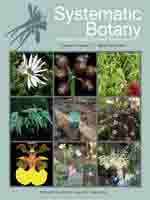The Pacific species of the polyphyletic genus Schefflera belong to three main clades, of which the Melanesian Schefflera clade is best represented in the archipelagos of New Caledonia, Fiji, Vanuatu, and the Solomon Islands. Previous studies have helped to establish the monophyly of Melanesian Schefflera, but an informal, morphology-based classification system that recognizes five subgeneric groupings within this clade remains largely untested. To examine relationships among Melanesian Scheffleras, DNA sequence data from two spacer regions (ITS and ETS) of the nuclear rRNA genes were gathered from a nearly comprehensive sample of species and analyzed phylogenetically. Results confirm the monophyly of four of the five informal groupings, including ‘Plerandra’ (from Fiji, Vanuatu, Solomon Islands, and New Guinea), ‘Gabriellae’ (from New Caledonia, Fiji, and Vanuatu), ‘Canacoschefflera’ (New Caledonia), and ‘Dictyophlebes’ (Fiji and Solomon Islands). However, rDNA data do not agree with morphology in regard to the fifth group, ‘Dizygotheca,’ which appears polyphyletic in the cladograms based on ITS and ETS sequences.
How to translate text using browser tools
1 January 2012
Phylogeny and Diversification in the Melanesian Schefflera Clade (Araliaceae) Based on Evidence from Nuclear rDNA Spacers
Gregory M. Plunkett,
Porter P. Lowry
ACCESS THE FULL ARTICLE
<
Previous Article
|

Systematic Botany
Vol. 37 • No. 1
January 2012
Vol. 37 • No. 1
January 2012




